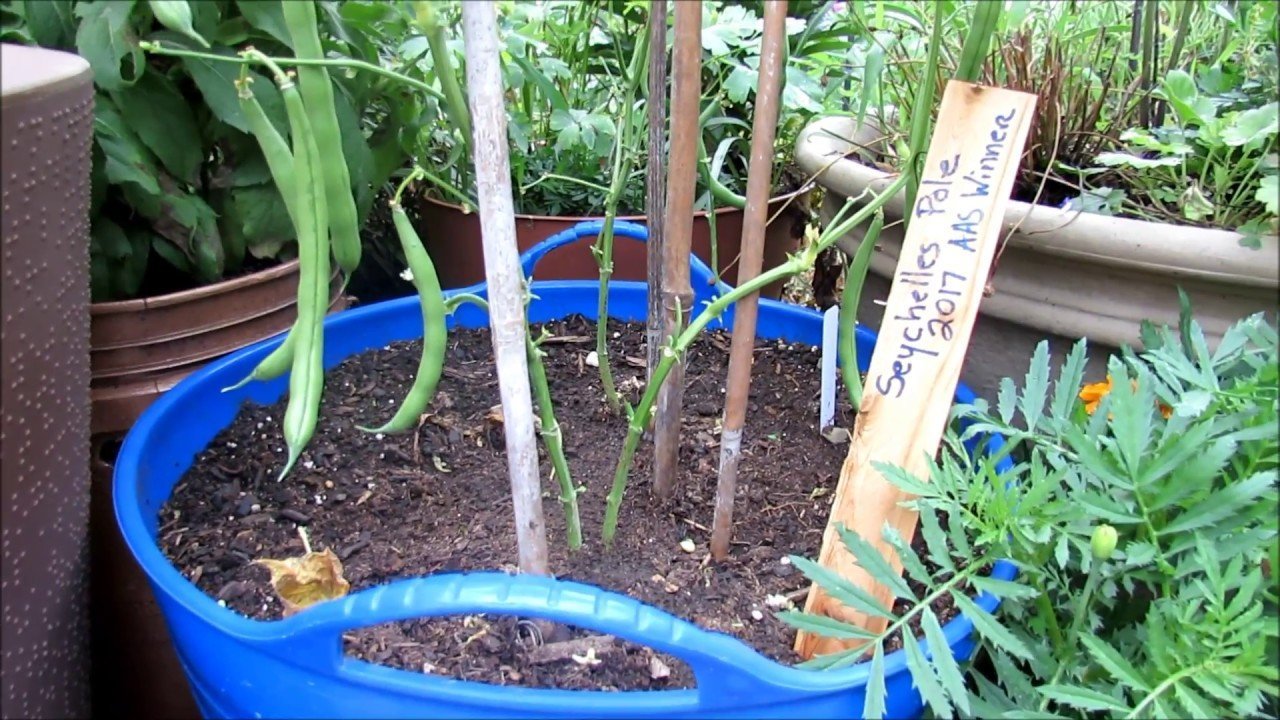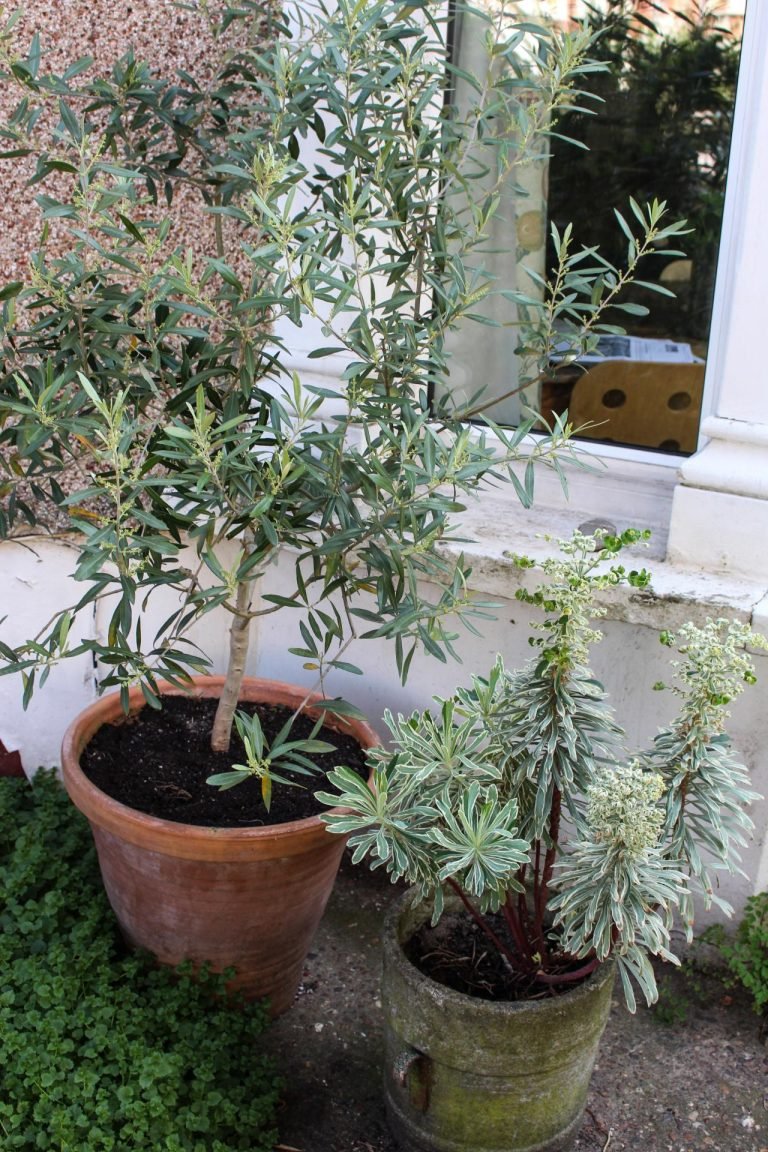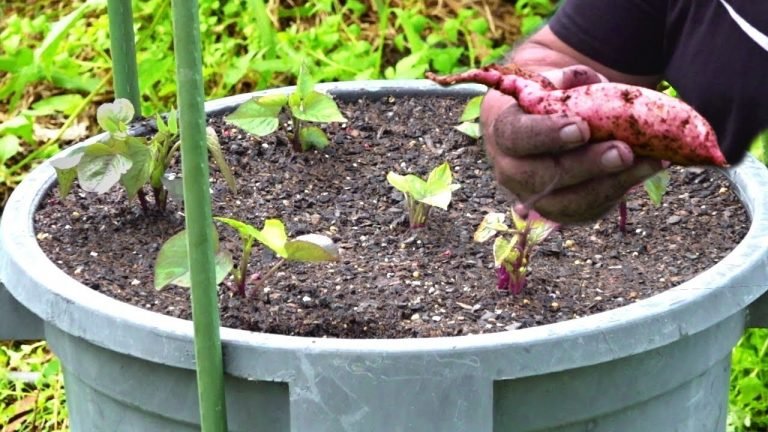how to grow pole beans in a pot – [Beginners Guide]
Hey there! Do you love the taste of fresh green beans but struggle to grow them in your garden? I’ve got great news for you. Growing pole beans in a pot is a fantastic option for home gardeners! Not only is it convenient and space-saving, but it’s also a fun and rewarding hobby.
I’ve been growing pole beans in pots for years and let me tell you, it’s one of the easiest and most productive plants you can grow at home. With a pot, you have complete control over the soil, water, and sunlight, ensuring that your beans receive the best growing conditions. Plus, you don’t have to worry about weeds or pests ruining your crop.
The best part? You can grow pole beans in pots on your balcony, patio, or even indoors if you have a sunny window. In a single season, you can expect to harvest up to 20 pounds of fresh beans from just one pot! So, whether you’re a seasoned gardener or just starting out, give growing pole beans in a pot a try. I promise you won’t regret it.
Pot or container selection
When it comes to growing pole beans in a pot, the size and construction of the pot are crucial to ensure optimal growth. The ideal size for a pot to grow pole beans is at least 12 inches in diameter and 18 inches in height. This size provides enough room for the roots to spread out and the beans to grow up the support.
In terms of construction, a pot made of materials such as plastic, terra cotta, or ceramic is suitable. However, make sure the pot has adequate drainage holes to prevent water from standing in the soil and causing root rot.
The capacity of the pot should be able to hold at least 2 to 3 gallons of soil. It’s important to choose a good quality potting soil that is well-draining and rich in nutrients. If you want to make sure your beans receive an adequate amount of water, consider using a self-watering pot.
In conclusion, when selecting a pot to grow pole beans, look for one that is at least 12 inches in diameter and 18 inches in height, with a capacity of 2 to 3 gallons of soil and adequate drainage holes. With the right pot and growing conditions, you’ll be on your way to harvesting a bountiful crop of delicious, fresh green beans!
Make suitable soil mix
When it comes to growing pole beans in a pot, the type and composition of soil are just as important as the pot itself. The right soil mix is essential for optimal growth and productivity.
For best results, use a high-quality, well-draining potting soil. A good potting soil will provide the right balance of nutrients, water retention, and aeration that pole beans need to thrive. Avoid using garden soil, as it may be too heavy and compacted for the delicate roots of the beans.
If you want to improve the fertility of your soil, consider adding compost or well-rotted manure to the mix. These organic amendments will provide the beans with the necessary nutrients for growth and fruiting. It’s important to maintain a pH balance between 6.0 and 7.0 for optimal growth.
In conclusion, when it comes to growing pole beans in a pot, choose a high-quality, well-draining potting soil, and consider adding compost or well-rotted manure for extra nutrients. With the right soil mix, you’ll be well on your way to a bountiful crop of fresh, delicious green beans!
How to plant the pole beans?
Growing pole beans in a pot at home is a simple and rewarding process. Follow these step-by-step instructions to get started:
- Choose a pot: Select a pot that is at least 12 inches in diameter and 18 inches in height, with a capacity of 2 to 3 gallons of soil and adequate drainage holes.
- Prepare the soil: Fill the pot with a high-quality, well-draining potting soil and mix in compost or well-rotted manure to improve fertility. Make sure the pH balance is between 6.0 and 7.0.
- Plant the seeds: Sow the seeds about 1 inch deep and 3 to 4 inches apart. Cover with soil and gently water.
- Provide support: Install a sturdy support such as a trellis or stake next to the pot for the beans to climb on. Make sure the support is securely in place before the beans begin to grow.
- Water and fertilize: Water the soil thoroughly and keep it consistently moist. Fertilize the beans every 2 weeks with a balanced, water-soluble fertilizer to promote healthy growth and fruiting.
- Harvest: Harvest the beans when they are young, tender, and about the size of a pencil. Pick the beans regularly to encourage the plant to produce more.
With these simple steps, you’ll be well on your way to growing a bountiful crop of fresh, delicious green beans in your own pot at home!
How to care for pole beans?
Pole Bean Care in a Pot at Home
Watering Requirement
Water pole beans regularly and deeply to keep the soil consistently moist but not waterlogged. Allow the top inch of soil to dry out before watering again. In hot weather, you may need to water more frequently. Using mulch around the base of the plant can help retain moisture and regulate soil temperature.
Fertilizer Requirement
Pole beans benefit from a balanced, all-purpose fertilizer. Apply fertilizer when the plants are about 8 inches tall, then every 3-4 weeks thereafter. Foliar feeding, or spraying a liquid fertilizer directly on the leaves, can also be beneficial. Follow the package instructions for proper application rates.
Sunlight Needs
Pole beans need at least 6 hours of direct sunlight per day, with 8-10 hours being ideal. If your pot does not receive enough sunlight, consider moving it to a sunnier location. Avoid placing the pot in direct sun during the hottest part of the day, which can scorch the leaves.
Pruning & Training
Pole beans grow up trellises, stakes, or other supports. As the plant grows, gently guide the stem upward and secure it to the support using twine or plant ties. Pinch off any side shoots that appear below the first flower cluster to encourage the plant to focus its energy on producing flowers and fruit.
Additional Care
- Plant pole beans in a well-draining soil mix with a pH between 6.0 and 7.0.
- Ensure the pot is large enough to support the plant as it grows, at least 12-18 inches deep and wide.
- Inspect regularly for pests, such as aphids, and treat promptly if needed.
- Harvest beans frequently to encourage the plant to produce more fruit.
By following these guidelines, you should have healthy and productive pole bean plants in your home garden.
Common problems
Common Problems with Pole Beans in a Pot at Home
Pests & Insects
Pole beans are susceptible to various pests and insects, including:
- Aphids – small, sap-sucking insects that can cause yellowing and stunted growth
- Mexican bean beetles – yellowish-orange beetles with black spots that can skeletonize leaves
- Slugs and snails – these pests can chew holes in the leaves and fruit
If you notice any pests or insects on your pole bean plants, take action promptly to remove them. Options include hand-picking and destroying affected parts, using an insecticidal soap, or applying a biological control such as ladybugs.
Diseases
Pole beans can be susceptible to various diseases, including:
- Powdery mildew – a fungal disease that causes a white, powdery growth on leaves and stems
- Mosaic virus – a viral disease that causes yellowing and stunted growth of the plants
Prevention is the best defense against diseases in pole beans. Ensure adequate spacing between plants to promote good air circulation, water the plants at the base rather than overhead, and avoid working with the plants when they are wet.
Poor Production
Pole beans may not produce well if they are not receiving proper care. Consider the following factors:
- Not enough sunlight – pole beans need at least 6 hours of direct sun per day
- Inadequate water – keep the soil consistently moist but not waterlogged
- Poor soil quality – plant pole beans in a well-draining soil mix with a pH between 6.0 and 7.0
- Overcrowding – ensure adequate spacing between plants to promote good air circulation
By addressing these factors, you can improve the production of your pole bean plants.
Other Issues
- Stunted growth – can be caused by poor soil, lack of sunlight, or over-fertilization
- Yellowing leaves – can be a sign of too much or too little water, disease, or pests
- Stretched or spindly growth – can occur when plants are not staked or trellised
By paying attention to these common problems and addressing them promptly, you can keep your pole bean plants healthy and productive.
Harvesting & storing homegrown pole beans
Harvesting and Storing Homegrown Pole Beans
When to Harvest
Pole beans are ready to harvest when the pods are firm and bright green, usually when they are about 4-5 inches long. You can also check for readiness by gently squeezing the pods – if they are firm and don’t dent easily, they are ready to harvest.
Overripe pods will be tough and fibrous, so it’s important to harvest pole beans at the right time.
How to Harvest
To harvest pole beans, gently grasp the stem near the base of the pod and pull downwards. It’s best to harvest the beans regularly, about every 2-3 days, to encourage continued production and to prevent the beans from over-maturing and becoming tough and fibrous.
Storing the Harvest
Pole beans should be stored in an airtight container in the refrigerator for up to one week. To preserve their freshness, it’s best to use them as soon as possible after harvesting.
You can also freeze pole beans for longer storage. Wash the beans, blanch them for 2-3 minutes, and then cool them in ice water. Drain the beans, pat them dry, and place them in freezer-safe bags. Frozen pole beans will keep for up to one year.
By harvesting and storing your pole beans properly, you can enjoy their fresh flavor and tender texture for an extended period of time.
Growing pole beans in container – Conclusion
Conclusion
Growing pole beans in a pot is a simple and rewarding gardening experience that can provide you with fresh, tasty vegetables all season long. By following these tips for watering, fertilizing, sunlight needs, pruning and training, and harvesting and storing, you’ll be able to grow healthy, abundant bean plants that will provide you with plenty of nutritious beans to enjoy.
Remember:
- Water your pole beans regularly, but be careful not to overwater them
- Use a well-balanced fertilizer to provide your plants with the nutrients they need to grow strong and healthy
- Provide your pole beans with plenty of sunlight, at least 6 hours per day
- Prune and train your pole beans to keep them from becoming overcrowded and to encourage proper air circulation
- Harvest your pole beans at the right time, when the pods are firm and bright green
- Store your harvested pole beans in the refrigerator or freezer to preserve their freshness
By following these guidelines, you’ll be able to grow and harvest a bountiful crop of delicious pole beans that you and your family can enjoy for months to come.
So why not try growing pole beans in a pot at home? It’s a great way to enjoy fresh, homegrown vegetables, and it’s a fun and rewarding activity that the whole family can enjoy.







